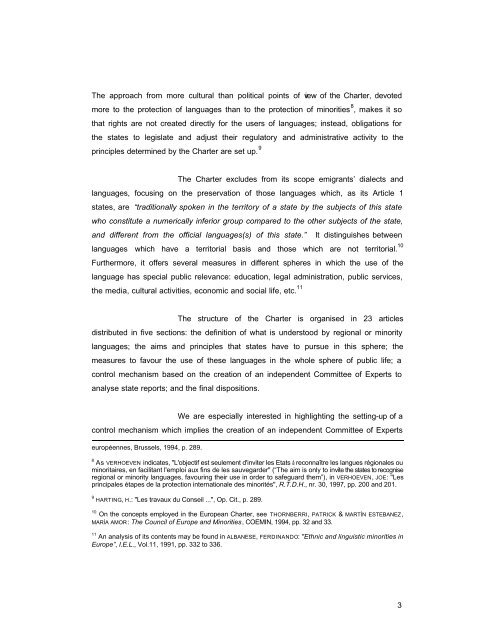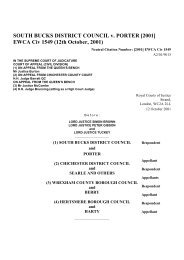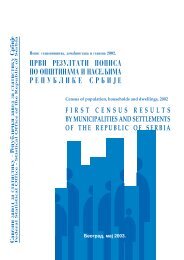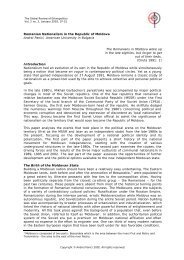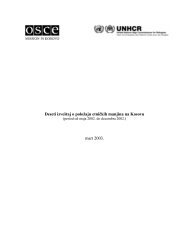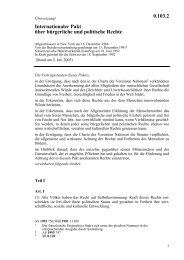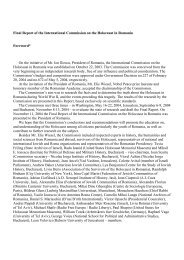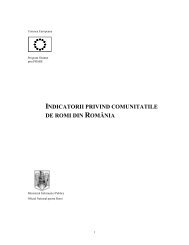get PDF document - MIRIS
get PDF document - MIRIS
get PDF document - MIRIS
Create successful ePaper yourself
Turn your PDF publications into a flip-book with our unique Google optimized e-Paper software.
The approach from more cultural than political points of view of the Charter, devoted<br />
more to the protection of languages than to the protection of minorities 8 , makes it so<br />
that rights are not created directly for the users of languages; instead, obligations for<br />
the states to legislate and adjust their regulatory and administrative activity to the<br />
principles determined by the Charter are set up. 9<br />
The Charter excludes from its scope emigrants’ dialects and<br />
languages, focusing on the preservation of those languages which, as its Article 1<br />
states, are “traditionally spoken in the territory of a state by the subjects of this state<br />
who constitute a numerically inferior group compared to the other subjects of the state,<br />
and different from the official languages(s) of this state.” It distinguishes between<br />
languages which have a territorial basis and those which are not territorial. 10<br />
Furthermore, it offers several measures in different spheres in which the use of the<br />
language has special public relevance: education, legal administration, public services,<br />
the media, cultural activities, economic and social life, etc. 11<br />
The structure of the Charter is organised in 23 articles<br />
distributed in five sections: the definition of what is understood by regional or minority<br />
languages; the aims and principles that states have to pursue in this sphere; the<br />
measures to favour the use of these languages in the whole sphere of public life; a<br />
control mechanism based on the creation of an independent Committee of Experts to<br />
analyse state reports; and the final dispositions.<br />
We are especially interested in highlighting the setting-up of a<br />
control mechanism which implies the creation of an independent Committee of Experts<br />
européennes, Brussels, 1994, p. 289.<br />
8 As VERHOEVEN indicates, "L'objectif est seulement d'inviter les Etats à reconnaître les langues régionales ou<br />
minoritaires, en facilitant l'emploi aux fins de les sauvegarder" (“The aim is only to invite the states to recognise<br />
regional or minority languages, favouring their use in order to safeguard them”), in VERHOEVEN, JOE: "Les<br />
principales étapes de la protection internationale des minorités", R.T.D.H., nr. 30, 1997, pp. 200 and 201.<br />
9 HARTING, H.: "Les travaux du Conseil ...", Op. Cit., p. 289.<br />
10 On the concepts employed in the European Charter, see THORNBERRI, PATRICK & MARTÍN ESTEBANEZ,<br />
MARÍA AMOR: The Council of Europe and Minorities, COEMIN, 1994, pp. 32 and 33.<br />
11 An analysis of its contents may be found in ALBANESE, FERDINANDO: "Ethnic and linguistic minorities in<br />
Europe”, I.E.L., Vol.11, 1991, pp. 332 to 336.<br />
3


